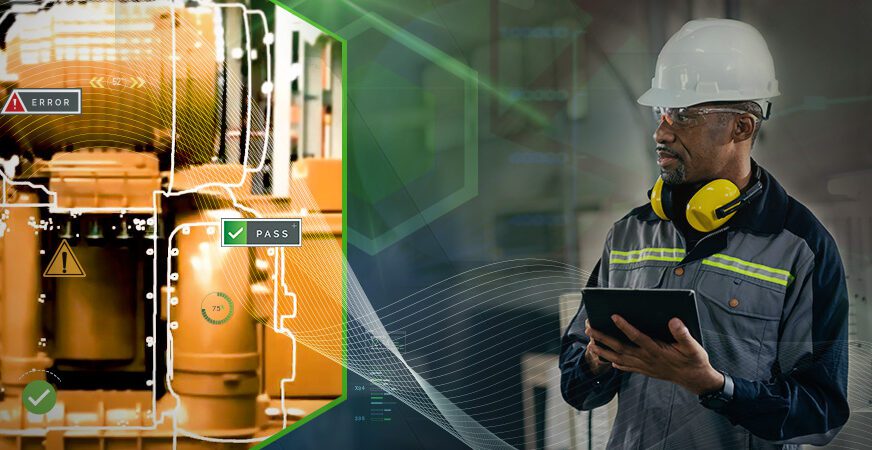Introduction to 5G and the Internet of Things (IoT)

The digital world is evolving at an unprecedented pace, and two of the most significant players in this transformation are 5G technology and the Internet of Things (IoT). Imagine a reality where devices communicate seamlessly, allowing for faster responses and smarter solutions. That’s what happens when you pair the lightning-fast capabilities of 5G with the interconnectedness of IoT.
This powerful duo is reshaping industries, enhancing user experiences, and unlocking unimaginable possibilities. From smart homes to advanced healthcare systems, their impact is evident everywhere you look. So why should you care about this dynamic partnership? Let’s dive into how 5G is revolutionizing IoT and discover its myriad benefits that promise to redefine our connected lives.
How 5G is Revolutionizing IoT

5G technology is transforming the landscape of IoT in remarkable ways. With lightning-fast speeds and ultra-low latency, devices can communicate with each other almost instantaneously.
This new level of connectivity opens endless possibilities. Imagine smart cities where traffic lights adapt to real-time conditions or healthcare systems that monitor patients continuously from home.
Moreover, 5G allows for a massive increase in device connections. This means millions more sensors and gadgets can operate simultaneously without clogging the network.
Energy efficiency also takes center stage with 5G, allowing IoT devices to consume less power while maintaining high performance.
As industries adopt these advancements, we see enhanced automation and smarter decision-making processes across various sectors like agriculture, manufacturing, and logistics. The potential of this powerful duo is just beginning to unfold as they redefine how we interact with our world.
Benefits of the 5G and IoT Combination

The combination of 5G and IoT brings remarkable benefits that can transform industries. With lightning-fast speeds, devices can communicate in real time. This leads to quicker decision-making processes.
Lower latency is another significant advantage. Critical applications, such as autonomous vehicles or remote surgeries, require instantaneous responses. 5G enables this level of performance seamlessly.
Scalability is enhanced too. Businesses can connect thousands of devices without sacrificing quality or speed. This capability supports the rapid growth of smart cities and industrial automation.
Energy efficiency also plays a role in this duo’s power. Many IoT devices consume less energy when paired with 5G technology, promoting sustainability.
Furthermore, enhanced security features are being developed alongside these technologies. As we rely more on connected devices, robust security measures become essential to protect sensitive information and maintain trust within networks.
Use Cases and Examples of 5G-enabled IoT Devices
5G-enabled IoT devices are transforming various industries with their enhanced connectivity. In smart cities, connected sensors monitor traffic patterns and air quality. This data helps optimize urban planning and improve public health.
In agriculture, farmers use 5G technology to deploy drones for crop monitoring. These drones collect real-time data on soil conditions and plant health, allowing for precision farming techniques.
Healthcare also benefits from this powerful duo. Remote patient monitoring devices provide continuous health updates through instant data transmission. Doctors can respond swiftly to emergencies or adjust treatments promptly.
Moreover, the logistics sector is harnessing 5G-powered IoT solutions for real-time tracking of shipments and assets. Companies can manage inventory efficiently while reducing costs associated with delays.
From home automation systems that enhance energy efficiency to industrial robots that streamline production lines, the applications are vast and varied. The future presents endless possibilities as more sectors embrace these advancements.
Potential Challenges and Concerns with 5G and IoT
While the combination of 5G and IoT offers immense potential, it also brings several challenges. One major concern is security. As more devices connect to the internet, vulnerabilities increase. Cybersecurity threats can expose sensitive data.
Another issue lies in infrastructure costs. Upgrading networks to support 5G requires significant investment from both telecom companies and businesses deploying IoT solutions.
Regulatory hurdles present additional roadblocks. Governments need to establish clear guidelines for usage, privacy, and safety standards related to these technologies.
Moreover, there are health concerns surrounding 5G radiation exposure. Though scientific consensus largely supports its safety, public perception remains a challenge that cannot be ignored.
Connectivity limitations in rural areas may hinder widespread adoption of 5G-enabled IoT devices. Without reliable access, many communities could miss out on this powerful duo’s benefits.
The Future of 5G and IoT: Predictions and Possibilities
The future of 5G and IoT holds immense potential. As networks become faster and more reliable, connectivity will expand beyond smartphones to everyday objects.
Imagine smart cities with integrated traffic systems that adapt in real time. Sensors could optimize energy use across buildings, reducing waste and cost.
Healthcare is another frontier. Wearable devices might transmit vital data instantly to medical professionals, enabling prompt interventions.
Agriculture will also transform through precision farming techniques. Drones equipped with sensors can monitor crops, improving yields while minimizing resource use.
Moreover, the entertainment industry may evolve drastically as augmented reality experiences become mainstream thanks to seamless data transmission.
As we embrace these advancements, ethical considerations around privacy and security will loom large. The balance between innovation and protection will be critical for societal acceptance moving forward.
Conclusion: Embracing the Power of 5G and IoT for a Connected
5G and the Internet of Things are reshaping our world in remarkable ways. Together, they create a powerful duo that enhances connectivity and efficiency. As we embrace this technology, we unlock new opportunities for industries ranging from healthcare to agriculture.
The advancements in speed and reliability delivered by 5G pave the way for smarter IoT devices. These innovations promise to transform how we live, work, and interact with one another.
As challenges arise—like security concerns or infrastructure gaps—the potential benefits far outweigh these hurdles. With determination and creativity, solutions will emerge to address these issues.
Looking ahead, it’s clear that 5G and IoT will continue to evolve together. Their combined capabilities hold immense promise for creating a more connected future. This is an exciting time where possibilities abound.
Embracing 5G alongside IoT opens doors to innovation that can drive efficiencies across various sectors while improving everyday life for countless individuals around the globe. The fusion of these technologies marks the beginning of a new era—one brimming with potential waiting to be realized.










